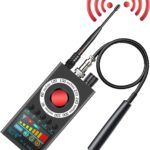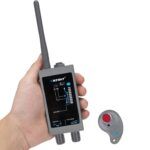A Faraday cage is a type of enclosure that is designed to block electromagnetic fields, including RF and RFID signals. It works by using conductive materials to create a barrier that prevents these fields from entering the cage or escaping from it. The cage can be made of various materials, such as metal mesh or sheets of conductive material like copper or aluminum.
When an RF or RFID signal encounters a Faraday cage, it induces an electric current in the cage, which in turn generates an opposing electromagnetic field. The two fields cancel each other out, effectively blocking the signal from passing through the cage. This makes a Faraday cage an effective way to protect against RF and RFID devices, as well as other types of electromagnetic interference. It can be used to protect sensitive equipment or materials from outside interference, or to prevent the leakage of electromagnetic radiation from a device inside the cage.
Ticonn's Faraday Bag for Car Fobs is a must-have for car owners who want to protect their vehicles from theft. The bag is designed to provide complete...
If you're looking for a reliable way to protect your car keys from theft, the TICONN Faraday Box Signal Blocker might be just what you need. Made of p...




































